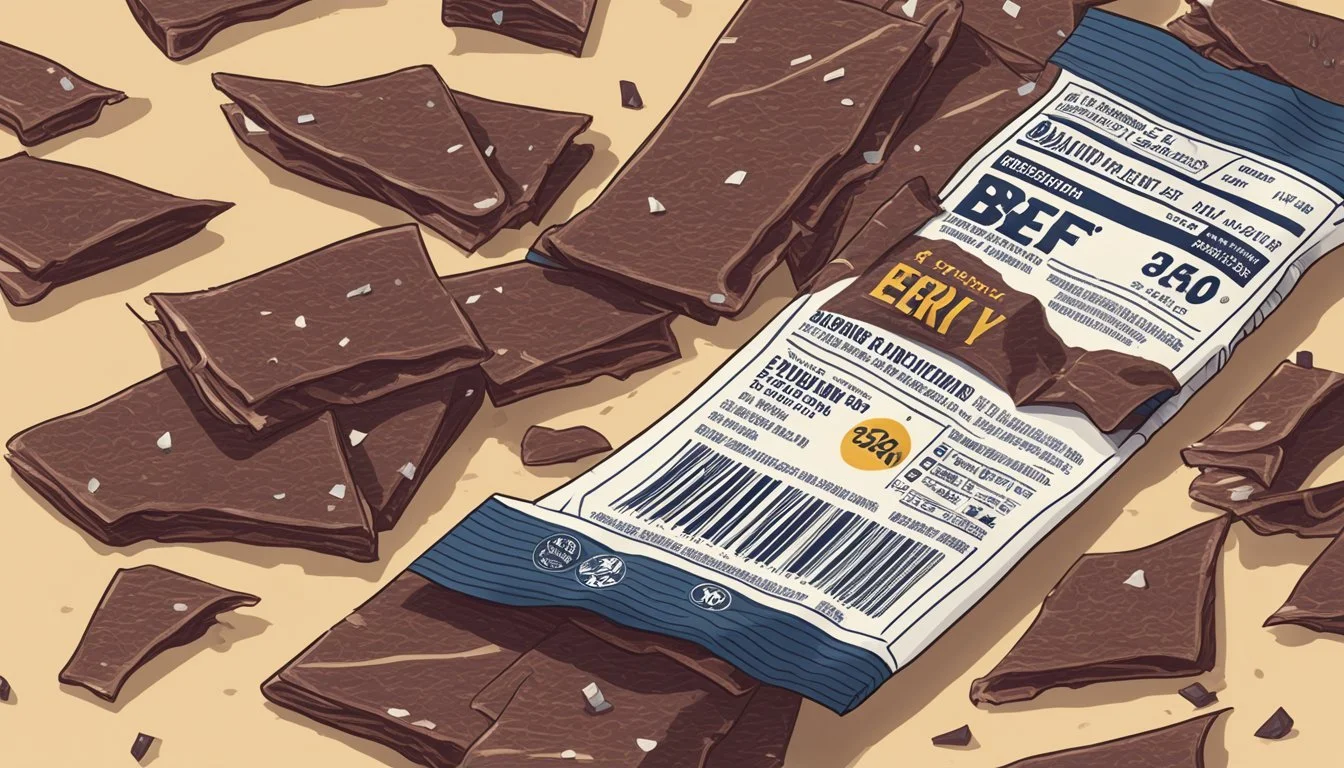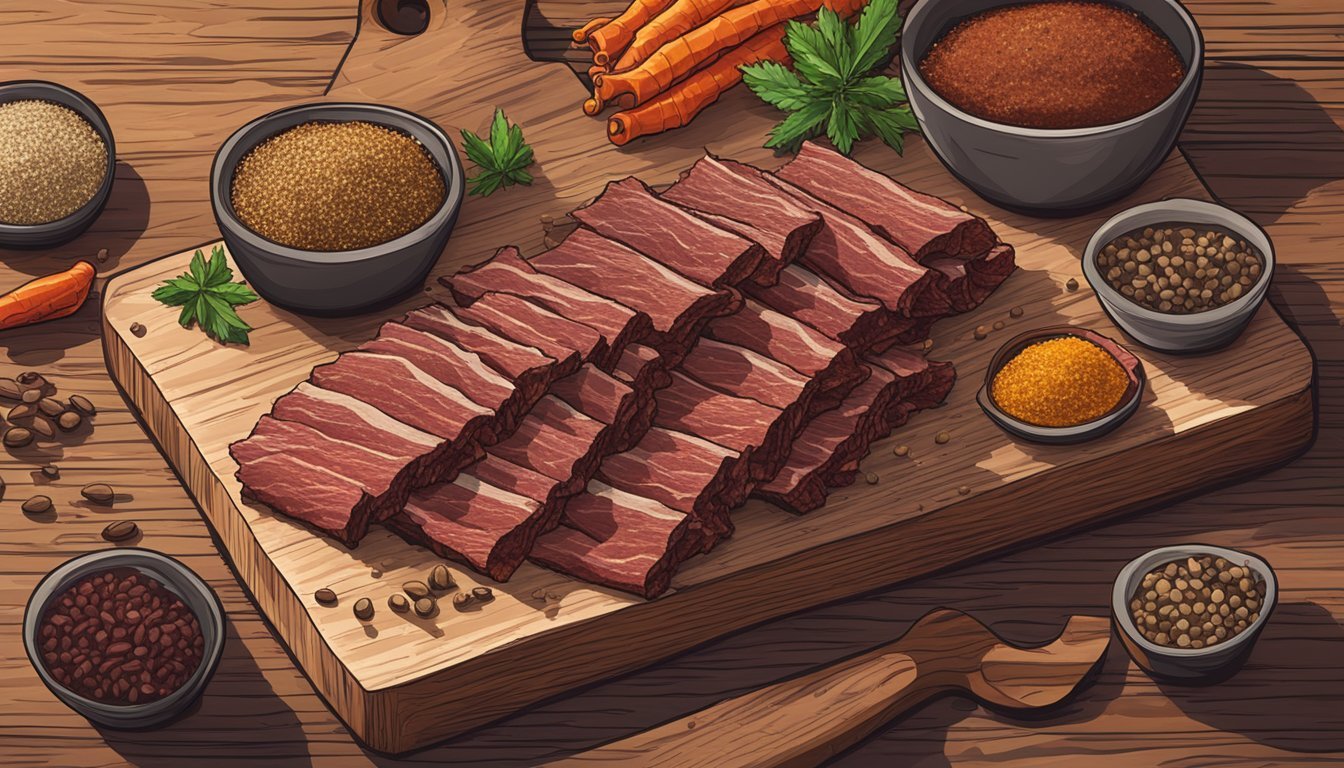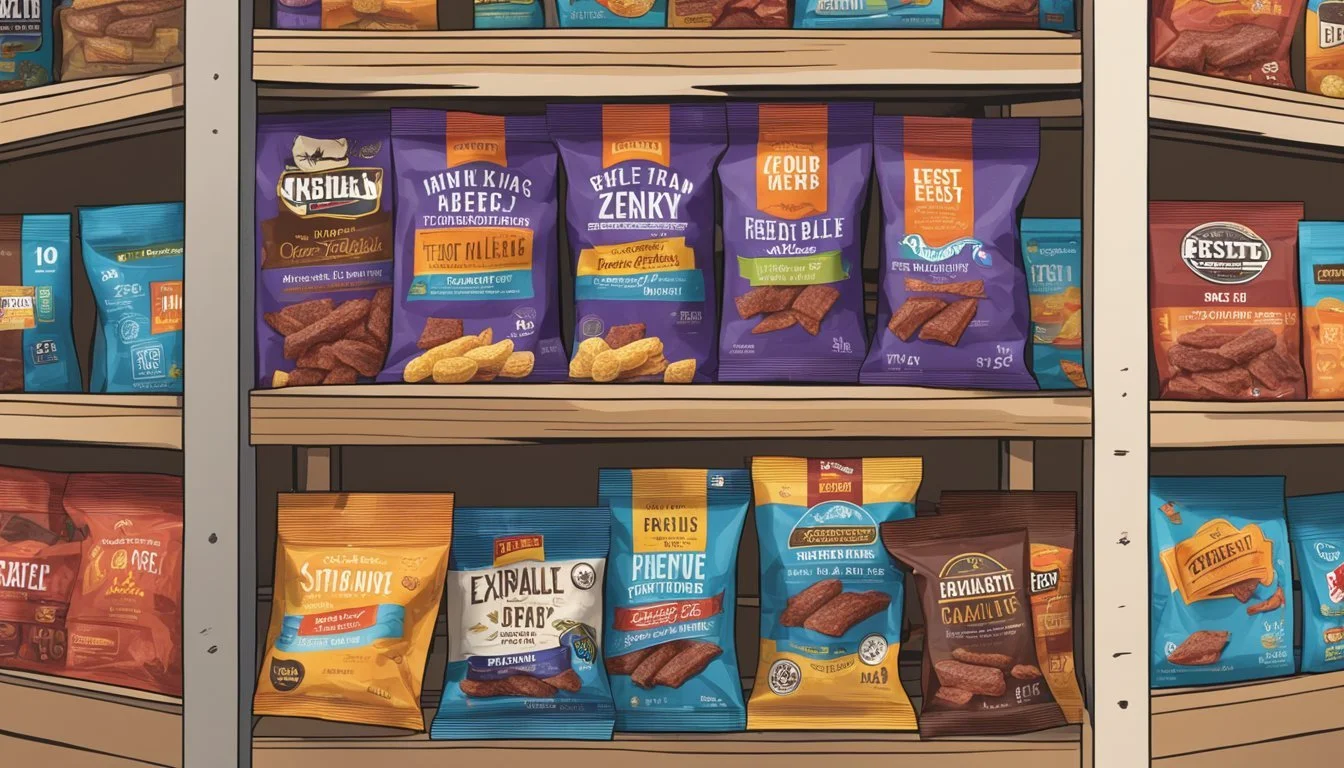Does Beef Jerky Go Bad?
Understanding Shelf Life and Storage Tips
Beef jerky is a popular snack known for its high protein content and long shelf life, making it a favorite among hikers, travelers, and those seeking a durable food option. The preservation process of beef jerky involves dehydrating lean meat, which effectively reduces the moisture content to a level that inhibits bacterial growth, an essential factor that contributes to its longevity. However, despite its reputation for having an extended shelf life, beef jerky is not impervious to spoilage.
The question of whether beef jerky can go bad is one that is rooted in understanding its storage and handling. Under ideal conditions, an unopened package of beef jerky can remain edible and retain its quality until the best-by date and sometimes beyond, as long as it remains in a stable, cool, and dry environment. Once opened, exposure to air and humidity can accelerate the deterioration process, with signs such as the presence of mold, off odors, discoloration, and textural changes signaling that the jerky is no longer suitable for consumption.
Understanding Beef Jerky and Its Composition
Beef jerky’s longevity and unique texture are attributable to its specific processing method and nutritional composition. This section provides an insight into the dehydration process that preserves beef jerky, as well as an overview of its nutritional content.
The Dehydration Process
The key to beef jerky’s shelf stability is the dehydration process it undergoes. This process involves drying lean meat at a low temperature over a prolonged period. The removal of moisture inhibits bacterial growth that would otherwise cause spoilage. It is crucial that the meat is properly cooked prior to dehydration to ensure that any bacteria are destroyed. The meticulous dehydration method ensures beef jerky’s safe consumption over an extended period.
Nutritional Content
Beef jerky is a source of various nutrients essential to the human diet. The primary component is protein, derived from the lean meat used in its creation. Due to the dehydration process, these nutrients are concentrated, making beef jerky a high-protein snack. Here is a breakdown of its typical nutritional content per one-ounce (28-gram) serving:
Protein: 9-15 grams
Fat: 1-3 grams
Iron: around 1.5 milligrams
These nutrients, particularly protein and iron, make beef jerky a powerful snack for sustaining energy levels and supporting muscle repair. However, it’s important to note that beef jerky can be high in sodium, so moderation is advised when incorporating it into one’s diet.
Factors Affecting Beef Jerky's Shelf Life
Beef jerky is known for its long shelf life, but several factors can significantly impact its duration of freshness. Understanding these factors is essential for maintaining the quality and safety of the product.
Moisture and Mold Growth
Moisture is the prime factor in determining the shelf life of beef jerky. Excessive moisture can lead to mold growth, drastically reducing its longevity. Beef jerky should ideally have a low moisture content to prevent bacterial and mold development, as these organisms thrive in moist environments.
Temperature and Exposure to Sunlight
Storage temperature directly influences beef jerky's shelf life. It should be stored in a cool, dry place, with temperatures ranging ideally between 40°F to 60°F (4°C to 16°C). Exposure to sunlight can increase the temperature of the storage area, potentially causing spoilage as heat can accelerate bacterial growth.
Packaging and Oxygen Exposure
The type of packaging used plays a critical role in extending the shelf life of beef jerky. Airtight containers or vacuum-sealed packages limit oxygen exposure, which is important as oxygen can lead to oxidation and degradation of the product. Packaging that prevents air entry helps in maintaining beef jerky’s freshness for a longer time.
How to Properly Store Beef Jerky
Proper storage is essential for maintaining the freshness and shelf life of beef jerky. Ensuring that beef jerky is kept under the right conditions can prevent spoilage and preserve its quality.
Ideal Storage Conditions
Beef jerky should be stored in a cool, dry place such as a pantry, away from direct sunlight and heat sources. The ideal storage temperature for beef jerky is between 40-70 degrees Fahrenheit. Once opened, the jerky should be kept in a resealable bag or an airtight container to minimize exposure to air and moisture, which can degrade its quality.
Temperature: 40-70°F
Location: Pantry or cabinet
Light Exposure: Minimal
Air Exposure: Minimal (use airtight containers or resealable bags)
Extending Shelf Life through Freezing
To extend the life of beef jerky beyond the best-by date or for prolonged storage, one can freeze the jerky. Before freezing, it's advisable to place the jerky in a vacuum-sealed bag to prevent freezer burn and oxidation. When stored in the freezer, beef jerky can remain edible for several months without a significant loss in flavor or texture.
Freezing: Vacuum-sealed, stored in the freezer
Duration: Several months (retain better texture and flavor)
Identifying Spoiled Beef Jerky
To ensure safety and quality, it's crucial to recognize the signs of spoiled beef jerky. Spoilage can be detected through visual examination and textural assessment, as well as by carefully evaluating the smell and taste.
Visual and Texture Changes
Color: Fresh beef jerky typically has a rich, red to brown hue. Discoloration, such as a dull gray or green tinge, often indicates spoilage. Signs of spoilage to watch for include unusual hues that are not characteristic of the jerky when it was purchased.
Texture: Beef jerky should be dry and leathery. If the jerky feels sticky or slimy, this suggests bacterial growth and spoilage. Mold is another visible sign that the jerky should not be consumed. If one observes mold, the jerky must be discarded promptly.
Smell and Taste Assessment
Smell: Healthy beef jerky emits a slightly smoky or meaty odor. In contrast, a rancid smell or foul odor is a clear warning sign. A spoiled jerky may smell sour or unusually pungent.
Taste: Although it's recommended to rely on visual and olfactory cues to avoid foodborne illness, a jerky that tastes rancid or off is likely spoiled and should not be eaten. It is essential to discard any jerky that does not pass the smell test to circumvent tasting potentially spoiled food.
Health and Safety Considerations
When it comes to beef jerky, understanding the health and safety considerations is crucial to avoid the risks associated with spoiled products and ensuring food safety. These include the potential for foodborne illness and the importance of preventive measures.
Risks of Consuming Spoiled Jerky
Consuming spoiled beef jerky can lead to foodborne illnesses, including food poisoning, due to the presence of harmful bacteria. Symptoms one may experience from foodborne illness include:
Nausea
Vomiting
Diarrhea
Fever
Abdominal pain
In severe cases, dehydration and organ damage could ensue, emphasizing the importance that one should not consume beef jerky that exhibits signs of spoilage such as an off odor, changes in color, or visible mold.
Preventive Measures for Food Safety
To ensure beef jerky is safe to eat and maintain food safety standards, one should follow strict preventive measures:
Storage: Keep unopened beef jerky in a cool, dry place and adhere to the best-by date for optimal freshness.
Packaging Integrity: Inspect the package for any signs of damage or tampering.
Hygiene: Practice good hand hygiene before handling beef jerky to prevent cross-contamination.
Moisture Control: Avoid moisture exposure to prevent the growth of mold and bacteria.
By following these guidelines, consumers can significantly reduce health risks associated with consuming beef jerky.
Commercial vs. Homemade Beef Jerky
The longevity and quality of beef jerky can vary significantly depending on whether it is commercially produced or made at home. This section delineates the differences in shelf life and quality between store-bought beef jerky and homemade jerky.
Differences in Shelf Life
Commercial beef jerky often has a longer shelf life compared to homemade varieties. This is primarily due to the processes and packaging methods used by manufacturers. Commercial jerky is typically cooked and dehydrated under stringent conditions before being sealed in vacuum-sealed packaging. This method reduces the presence of moisture and oxygen, which are the main contributors to spoilage. Consumers can expect an unopened package to remain safe to consume past the best-by date, though the quality may diminish over time.
Homemade jerky, on the other hand, lacks the commercial dehydration and packaging processes. Therefore, the shelf life of homemade beef jerky is considerably shorter. Without the benefits of commercial preservation techniques, homemade jerky is more susceptible to moisture and should be consumed within a shorter time frame after preparation.
Quality and Preservation
Preservation: Commercially produced beef jerky benefits from preservatives that maintain quality and extend shelf life. The preservatives and the packaging in which commercial jerky is sold help protect against moisture and bacterial growth, thus preserving the quality of the meat snack for a longer period.
Quality: Homemade jerky allows for more control over the quality of ingredients used, including the choice of meat and the level of salt and seasonings. Nevertheless, it requires careful handling during preparation. Adequate dehydration is necessary to inhibit bacterial growth and spoilage. Ensuring that homemade jerky is thoroughly dehydrated is key to avoiding moisture, which can lead to reduced quality and potential spoilage.
In summary, while commercial beef jerky usually offers a longer shelf life and certain preservative benefits, homemade jerky presents the opportunity to tailor the quality and ingredients to personal preferences, albeit with a need for careful preservation practices.
Additional Tips for Enjoying Beef Jerky
Enjoying beef jerky to the fullest extends beyond simply purchasing a pack; it encompasses a deliberate selection of flavors and textures that cater to personal preferences, ensuring maximum palatability.
Choosing the Right Flavors
When selecting flavors, one should consider the variety that beef jerky offers. Mahogany smoked meats, for instance, offer a unique taste that stands out among common flavors. For those who prefer something traditional, options like original or teriyaki could be more to their liking. The adventurous eater might reach for exotic or spicy varieties. It’s beneficial to try jerky from small batches as they often come in a myriad of innovative flavors.
Traditional: Original, Teriyaki, Peppered
Adventurous: Chili Mango, Ghost Pepper, Bourbon Glaze
Smoked: Hickory, Mahogany, Applewood
Considering Texture Preferences
The texture of beef jerky can greatly affect one's enjoyment, with preferences varying from chewy to tender. Chewy jerky provides a longer-lasting snack experience, often signaling a lower moisture content which can help with storing beef jerky for extended periods. Tender jerky can be more palatable for those who might find chewier textures too laborious to eat. One's choice in texture will also influence how they store the jerky; tender varieties may require sealed packaging to maintain their moistness.
Chewy: Dense and rugged, lasts longer when stored.
Tender: Soft and easy to tear, keep sealed for freshness.
Understanding Expiration and Best-By Dates
When examining beef jerky packaging, consumers will often find date labels that are indicative of quality and safety. It's crucial to interpret these labels correctly to gauge the freshness of the product.
Labels and What They Mean
Expiration Date: This date signals the last day the product is expected to maintain its quality and safety. After this date, it's advised to discard the beef jerky as it may not be safe to consume.
Best-By Date: Reflects the manufacturer's estimate of when the beef jerky will be at its peak quality in terms of flavor and texture. While beef jerky may not necessarily be spoiled after this date, it might not have the same freshness.
How They Relate to Freshness
The best-by date is the primary indicator consumers should look at when assessing freshness. A sealed package of beef jerky with an unexpired best-by date suggests that the jerky is in its optimal state, promising the expected taste and texture. On the other hand, beef jerky past its best-by date may still be safe to consume but could show signs of diminishing quality, such as changes in flavor or potential rancidity.
The Role of Preservatives in Beef Jerky
Beef jerky's long shelf life is largely attributed to the use of preservatives that inhibit the growth of microorganisms. Both natural and artificial preservatives contribute to the low moisture content essential for jerky's preservation.
Natural vs. Artificial Preservatives
Natural Preservatives:
Salt: One of the oldest methods of curing meat, salt extracts moisture to create an environment unsuitable for bacteria.
Sugar: Sometimes used to balance flavor, sugar also acts as a preservative by reducing water activity.
Artificial Preservatives:
Typically found in commercial jerky, these include sodium nitrite which prevents oxidation and bacterial growth.
BHT (Butylated Hydroxytoluene): An antioxidant used to prevent rancidity.
Artificial preservatives are often more effective at extending shelf life; however, consumer preference is increasingly shifting towards natural additives due to health considerations.
Impact on Shelf Life and Safety
Shelf Life:
Preservatives, whether natural or synthesized, are pivotal for maintaining the shelf life of beef jerky by keeping the moisture content low.
This desiccated state is less hospitable to microorganisms that cause spoilage.
Safety:
Proper use of preservatives ensures safety from foodborne pathogens like Salmonella and E. coli.
In conjunction with correct drying and packaging, preservatives help maintain the quality of jerky over extended periods.
While preservatives are crucial for the long shelf life of beef jerky, it is also necessary to store it properly to prevent degradation of quality and ensure safety.
FAQs About Beef Jerky Storage and Safety
When storing beef jerky, it is crucial to consider factors such as moisture content, humidity, and temperature to ensure safety and maintain quality. Proper handling and refrigeration are key to prolonging shelf life and preventing spoilage.
Handling and Consumption Best Practices
Storage: Beef jerky should be stored in a cool, dry place away from direct sunlight. Once opened, storing it in an airtight container or ziploc bag in the fridge (35-38°F / 1.7-3.3°C) is advisable to maintain quality and extend shelf life.
Humidity and Moisture Content: Beef jerky’s low moisture content inhibits microbial growth. However, exposure to humidity can introduce moisture, so desiccants or maintaining a low-humidity environment is beneficial.
Freezing Beef Jerky: For long-term storage, beef jerky can be frozen. To prevent texture changes, freeze in original packaging or vacuum-sealed bags. This can effectively extend the shelf life by several months.
Busting Common Myths
Myth: Beef Jerky is Indestructible: Beef jerky is indeed durable and shelf-stable due to its drying process but it is not immune to spoilage. It can go bad if not stored properly.
Refrigeration After Opening: Often overlooked, refrigeration of beef jerky after opening is a best practice to hinder bacterial growth. While it's dried and nutrient-dense, making it less prone to spoilage than fresh products like eggs, it still benefits from being refrigerated.
In summary, consumers enjoy beef jerky for its convenience and longevity, but mindful storage practices are essential to ensure safety and optimum enjoyment.








